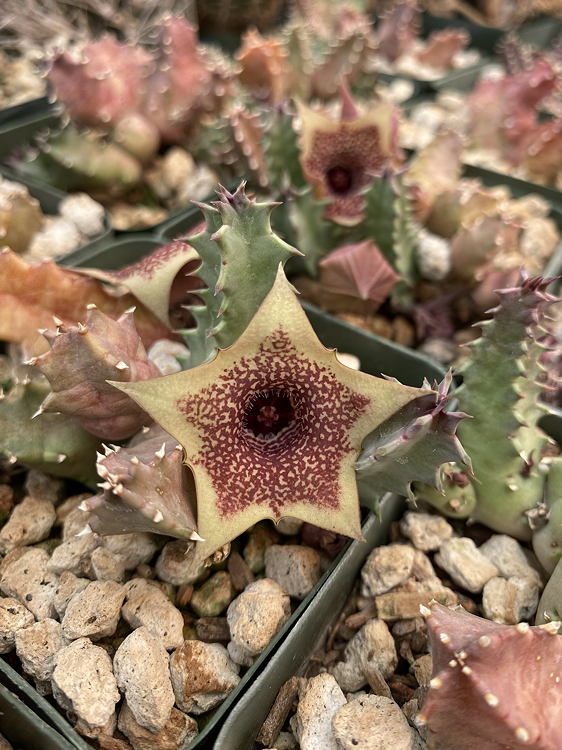Purist collectors of stapeliads may prefer naturally occurring species, but there is a place in horticulture for hybrids. Hybrids often occur spontaneously when open pollinated by some accommodating fly pollinator, while controlled pollination requires surgical skill. This was best executed, and remains the prime example to this day, by Jerry Barad (1923 – 2016). His website detailing some of his techniques and results still resides, posthumously, on the internet: Stapeliads - Orchids of the Succulent World. Huernias seem to be among the better stapeliad hybrid parents, producing more durable, long-lived plants with attractive flowers. We have introduced a couple of these spontaneous hybrids in the past: H. ‘Foma’, ISI 2011-29, and H. ‘Stretched Hide’, ISI 2013-23. Like these previous offerings, ‘Fringe Benefit’ is a selection from open pollinated seed of Huernia thuretii var. primulina, but the next generation, the F2, rather than the initial F1 (meaning the first filial) generation. It resembles H. ‘Foma’ in having a dark annulus contrasting with the pale petals but it is elected for its unusual pattern of maroon annulus with points opposite the corolla lobes leaving a thin (3 mm) tan-colored margin around the dark annulus. Therefore, the cultivar name alludes both to the color pattern and to the fortuitous results of growing another generation, albeit one of open pollinated origin. Rooted cuts of HBG 109668, grown from seed sown July 24, 2007. $10.

Published in the Cactus and Succulent Journal, Vol. 95 (2), Summer 2023